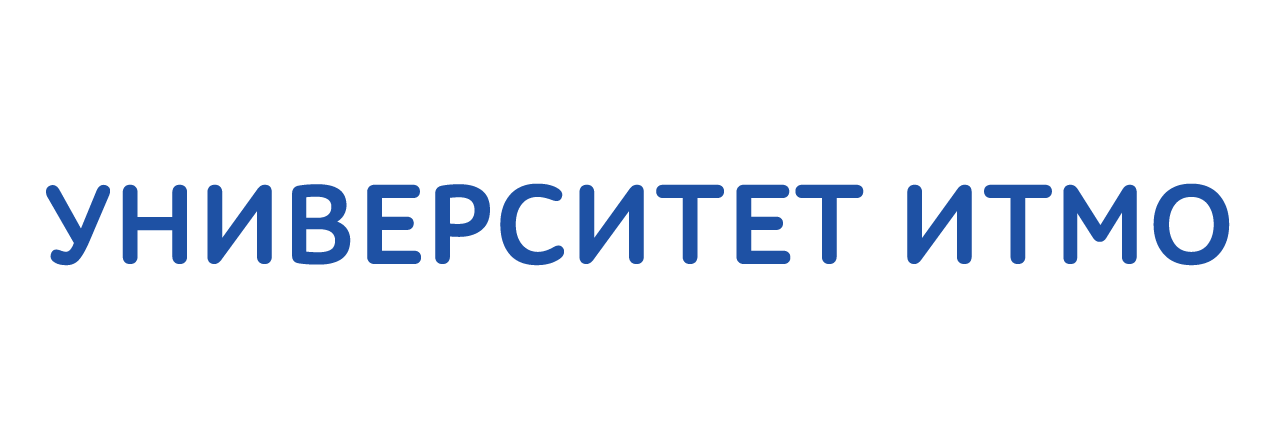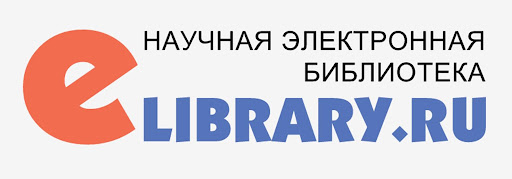Меню
Публикации
2025
2024
2023
2022
2021
2020
2019
2018
2017
2016
2015
2014
2013
2012
2011
2010
2009
2008
2007
2006
2005
2004
2003
2002
2001
Главный редактор

НИКИФОРОВ
Владимир Олегович
д.т.н., профессор
Партнеры
doi: 10.17586/2226-1494-2022-22-3-574-584
УДК 004.89
Моделирование базового переводчика индонезийского языка жестов на одноплатном компьютере Raspberry Pi
Читать статью полностью
Язык статьи - английский
Ссылка для цитирования:
Аннотация
Ссылка для цитирования:
Фадлила У., Прасетьо Р.А.Р., Махамад А.К., Хандага Б., Саон Ш., Судармила Э. Моделирование базового переводчика индонезийского языка жестов на одноплатном компьютере Raspberry Pi // Научно-технический вестник информационных технологий, механики и оптики. 2022. Т. 22, № 3. С. 574–584 (на англ. яз.). doi: 10.17586/2226-1494-2022-22-3-574-584
Аннотация
Глухие люди имеют потерю слуха от легкой формы до очень тяжелой. Такие люди испытывают трудности при обработке языковой информации, как со слуховыми аппаратами, так и без них. Глухие люди, которые не применяют слуховые аппараты, в своих повседневных разговорах используют язык жестов. В то же время здоровым людям трудно общаться с глухими, поэтому для общения они должны знать язык жестов. В Индонезии существует два жестовых языка, а именно Indonesian Sign Language System (SIBI) и Indonesian Sign Language (BISINDO). Разработана модель для помощи в общении между глухими и здоровыми людьми. Модель рассмотрена на примере использования одноручного метода SIBI и доработана с использованием одноручного и двуручного BISINDO. Основная функция метода — распознавание основных букв, слов, предложений и цифр с помощью одноплатного компьютера Raspberry Pi и камеры, которые предназначены для обнаружения движений языковых жестов. Полученные изображения переводятся в текст на экране монитора с помощью специальной программы. Используемый метод заключается в обработке изображений и машинном обучении с использованием языка программирования Python и техники сверточной нейронной сети. Прототип устройства выдает предупреждение о необходимости повторить язык жестов, если перевод не удался, и удалить перевод, если он не соответствует базе данных. Прототип устройства требует дополнительных исследований для обеспечения гибкости при считывании динамических движений, выражений лиц, и перевода слов, не включенных в существующую базу данных. Также требуется расширение базы данных, отличной от языка жестов SIBI, например, BISINDO, или языков жестов из других регионов или стран.
Ключевые слова: CNN, глухие люди, дроид-камера, обработка изображений, машинное обучение, Python, Raspberry Pi, SIBI, язык жестов, камера смартфона, веб-камера
Благодарности. Работа поддержана исследовательским грантом TIER 1, H917. Исследователи благодарят всех, кто внес свой вклад в подготовку работы, особенно в учебные программы по электротехнике и электронике UMS (Университет Мухаммадия Суракарта) и по электротехнике Университета Тун Хусейн Онн Малайзия (UTHM), управление исследованиями. Благодарим Центр, который способствовал реализации и тестированию этого исследования.
Список литературы
Благодарности. Работа поддержана исследовательским грантом TIER 1, H917. Исследователи благодарят всех, кто внес свой вклад в подготовку работы, особенно в учебные программы по электротехнике и электронике UMS (Университет Мухаммадия Суракарта) и по электротехнике Университета Тун Хусейн Онн Малайзия (UTHM), управление исследованиями. Благодарим Центр, который способствовал реализации и тестированию этого исследования.
Список литературы
1. Hernawati T. Pengembangan kemampuan berbahasa dan berbicara anak tunarungu // Jurnal Jurusan PLB FIP Universitas Pendidikan Indonesia. 2007. V. 7. N 1. P. 101110.
2. Shiraishi Y., Zhang J., Wakatsuki D., Kumai K., Morishima A. Crowdsourced real-time captioning of sign language by deaf and hard-of-hearing people // International Journal of Pervasive Computing and Communications. 2017. V. 13. N 1. P. 2–25. https://doi.org/10.1108/IJPCC-02-2017-0014
3. Islalm M.S., Rahman M.M., Rahman M.H., Arifuzzaman M., Sassi R., Aktaruzzaman M. Recognition bangla sign language using convolutional neural network // Proc. of the 2019 International Conference on Innovation and Intelligence for Informatics, Computing, and Technologies (3ICT). 2019. P. 8910301. https://doi.org/10.1109/3ICT.2019.8910301
4. Lim M.Y. MySlang – An Electronic Malaysian Sign Language Dictionary. 2008. p. 145.
5. Karpov A., Kipyatkova I., Zelezny M. Automatic Technologies for processing spoken sign languages // Procedia Computer Science. 2016. V. 81. P. 201–207. https://doi.org/10.1016/j.procs.2016.04.050
6. Brour M., Benabbou A. ATLASLang NMT: Arabic text language into Arabic sign language neural machine translation // Journal of King Saud University - Computer and Information Sciences. 2019. V. 33. N 9. P. 1121–1131. https://doi.org/10.1016/j.jksuci.2019.07.006
7. Latif G., Mohammad N., Alghazo J., AlKhalaf R., AlKhalaf R. ArASL: Arabic alphabets sign language dataset // Data in Brief. 2019. V. 23. P. 103777. https://doi.org/10.1016/j.dib.2019.103777
8. Suharjito S., Thiracitta N., Gunawan H., Witjaksono G. The comparison of some hidden Markov models for sign language recognition // Proc. of the 1st Indonesian Association for Pattern Recognition International Conference (INAPR). 2019. P. 6–10. https://doi.org/10.1109/INAPR.2018.8627031
9. Muthu Mariappan H., Gomathi V. Real-time recognition of Indian sign language // Proc. of the 2nd International Conference on Computational Intelligence in Data Science (ICCIDS). 2019. P. 8862125. https://doi.org/10.1109/ICCIDS.2019.8862125
10. Kadiyala A., Kumar A. Applications of Python to evaluate environmental data science problems // Environmental Progress and Sustainable Energy. 2017. V. 36. N 6. P. 1580–1586. https://doi.org/10.1002/ep.12786
11. Xie M., Ma X. End-to-End residual neural network with data augmentation for sign language recognition // Proc. of the 4th IEEE Advanced Information Technology, Electronic and Automation Control Conference (IAEAC). 2019. P. 1629–1633. https://doi.org/10.1109/IAEAC47372.2019.8998073
12. Inoue K., Shiraishi T., Yoshioka M., Yanagimoto H. Depth sensor based automatic hand region extraction by using time-series curve and its application to Japanese finger-spelled sign language recognition // Procedia Computer Science. 2015. V. 60. N 1. P. 371–380. https://doi.org/10.1016/j.procs.2015.08.145
13. Xue Y., Gao S., Sun H., Qin W. A Chinese sign language recognition system using leap motion // Proc. of the 7th International Conference on Virtual Reality and Visualization (ICVRV). 2017. P. 180–185. https://doi.org/10.1109/ICVRV.2017.00044
14. Kumar E.K., Kishore P.V.V., Kiran Kumar M.T., Kumar D.A. 3D sign language recognition with joint distance and angular coded color topographical descriptor on a 2 – stream CNN // Neurocomputing. 2020. V. 372. P. 40–54. https://doi.org/10.1016/j.neucom.2019.09.059
15. Yang X., Chen X., Cao X., Wei S., Zhang X. Chinese sign language recognition based on an optimized tree-structure framework // IEEE Journal of Biomedical and Health Informatics. 2017. V. 21. N 4. P. 994–1004. https://doi.org/10.1109/JBHI.2016.2560907
16. Rincon Vega A.M., Vasquez A., Amador W., Rojas A. Deep learning for the recognition of facial expression in the Colombian sign language // Annals of Physical and Rehabilitation Medicine. 2018. V. 61. p. e96. https://doi.org/10.1016/j.rehab.2018.05.204
17. Joy J., Balakrishnan K., Sreeraj M. SignQuiz: A quiz based tool for learning fingerspelled signs in indian sign language using ASLR // IEEE Access. 2019. V. 7. P. 28363–28371. https://doi.org/10.1109/ACCESS.2019.2901863
18. Gupta B., Shukla P., Mittal A. K-nearest correlated neighbor classification for Indian sign language gesture recognition using feature fusion // Proc. of the 6th International Conference on Computer Communication and Informatics (ICCCI). 2016. P. 7479951. https://doi.org/10.1109/ICCCI.2016.7479951
19. Singh S. Sign language to text by feed forward back propagation neural network // International Journal of Advanced Research in Computer Science. 2012. V. 3. N 3. P. 146–152. https://doi.org/10.26483/ijarcs.v3i3.1209
20. Abid M.R., Petriu E.M., Amjadian E. Dynamic sign language recognition for smart home interactive application using stochastic linear formal grammar // IEEE Transactions on Instrumentation and Measurement. 2015. V. 64. N 3. P. 596–605. https://doi.org/10.1109/TIM.2014.2351331
21. Bayu Ramadhani Fajri B., Ramadhani Fajri B., Kusumastuti G. Perceptions of ‘hearing’ people on sign language learning // Advances in Social Science, Education and Humanities Research. 2019. V. 382. P. 364–367. https://doi.org/10.2991/icet-19.2019.91
22. Abbas A., Sarfraz S. Developing a prototype to translate text and speech to Pakistan sign language with bilingual subtitles: A framework // Journal of Educational Technology Systems. 2018. V. 47. N 2. P. 248–266. https://doi.org/10.1177/0047239518794168
23. Tao W., Leu M.C., Yin Z. American Sign Language alphabet recognition using Convolutional Neural Networks with multiview augmentation and inference fusion // Engineering Applications of Artificial Intelligence. 2018. V. 76. P. 202–213. https://doi.org/10.1016/j.engappai.2018.09.006
24. Sudharshan D.P., Raj S. Object recognition in images using convolutional neural network // Proc. of the 2nd International Conference on Inventive Systems and Control (ICISC). 2018. P. 718–821. https://doi.org/10.1109/ICISC.2018.8398893
25. Hernández-Blanco A., Herrera-Flores B., Tomás D., Navarro-Colorado B. A Systematic review of deep learning approaches to educational data mining // Complexity. 2019. V. 2019. P. 1306039. https://doi.org/10.1155/2019/1306039
26. Zhang Q., Zhang M., Chen T., Sun Z., Ma Y., Yu B. Recent advances in convolutional neural network acceleration // Neurocomputing. 2019. V. 323. P. 37–51. https://doi.org/10.1016/j.neucom.2018.09.038
27. Bantupalli K., Xie Y. American sign language recognition using deep learning and computer vision // Proc. of the 2018 IEEE International Conference on Big Data. 2018. P. 4896–4899. https://doi.org/10.1109/BigData.2018.8622141
28. Liao Y., Xiong P., Min W., Min W., Lu J. Dynamic sign language recognition based on video sequence with BLSTM-3D residual networks // IEEE Access. 2019. V. 7. P. 38044–38054. https://doi.org/10.1109/ACCESS.2019.2904749
29. Nasreddine K., Benzinou A. Shape geodesics for robust sign language recognition // IET Image Process. 2019. V. 13. N 5. P. 825–832. https://doi.org/10.1049/iet-ipr.2018.5282
30. Tolentino L.K.S., Serfa Juan R.O., Thio-ac A.C., Pamahoy M.A.B., Forteza J.R.R., Garcia X.J.O. Static sign language recognition using deep learning // International Journal of Machine Learning and Computing. 2019. V. 9. N 6. P. 821–827. https://doi.org/10.18178/ijmlc.2019.9.6.879
31. Sreedevi J., Rama Bai M., Ahmed M.M. An approach to translate hand gestures into telugu text // International Journal of Scientific and Technology Research. 2020. V. 9. N 4. P. 258–264.
32. Azar S.G., Seyedarabi H. Trajectory-based recognition of dynamic Persian sign language using hidden Markov model // Computer Speech and Language. 2020. V. 61. P. 101053. https://doi.org/10.1016/j.csl.2019.101053
33. Rajam P.S., Balakrishnan G. Recognition of Tamil sign language alphabet using image processing to aid deaf-dumb people // Procedia Engineering. 2012. V. 30. P. 861–868. https://doi.org/10.1016/j.proeng.2012.01.938
34. Tan T.S., Salleh S.H., Ariff A.K., Ting C.M., Siew K.S., Leong S.H. Malay sign language gesture recognition system // Proc. of the 2007 International Conference on Intelligent and Advanced Systems (ICIAS). 2007. P. 982–985. https://doi.org/10.1109/ICIAS.2007.4658532
35. Gulhane V.M., Joshi M.S., Ingole M.D. Neural network based hand gesture recognition // International Journal of Advanced Research in Computer Science. 2012. V. 3. N 3. P. 849–853. https://doi.org/10.26483/ijarcs.v3i3.1244
36. Indra D., Purnawansyah S., Madenda S., Wibowo E.P. Indonesian sign language recognition based on shape of hand gesture // Procedia Computer Science. 2019. V. 161. P. 74–81. https://doi.org/10.1016/j.procs.2019.11.101
37. Cheok M.J., Omar Z., Jaward M.H. A review of hand gesture and sign language recognition techniques // International Journal of Machine Learning and Cybernetics. 2019. V. 10. N 1. P. 131–153. https://doi.org/10.1007/s13042-017-0705-5
38. Tewari D., Srivastava S.K. A visual recognition of static hand gestures in Indian sign language based on kohonen self-organizing map algorithm // International Journal of Engineering and Advanced Technology. 2012. N 2. P. 165–170.
39. Rajaganapathy S., Aravind B., Keerthana B., Sivagami M. Conversation of sign language to speech with human gestures // Procedia Computer Science. 2015. V. 50. P. 10–15. https://doi.org/10.1016/j.procs.2015.04.004
40. Chen Y., Zhang W. Research and implementation of sign language recognition method based on kinect // Proc. of the 2nd International Conference on Computer and Communications (ICCC). 2016. P. 1947–1951. https://doi.org/10.1109/CompComm.2016.7925041
41. Abed A.A., Rahman S.A. Python-based Raspberry Pi for hand gesture recognition // International Journal of Computer Applications. 2017. V. 173. N 4. P. 18–24. https://doi.org/10.5120/ijca2017915285
42. Suharjito, Ariesta M.C., Wiryana F., Kusuma G.P. A survey of hand gesture recognition methods in sign language recognition // Pertanika Journal of Science and Technology. 2018. V. 26. N 4. P. 1659–1675.
43. Asadi-Aghbolaghi M., Clapés A., Bellantonio M., Escalante H., Ponce-López V., Baró X., Guyon I., Kasaei S., Escalera S. Deep learning for action and gesture recognition in image sequences: A survey // Gesture Recognition. Springer, 2017. P. 539–578. https://doi.org/10.1007/978-3-319-57021-1_19
44. Manikandan K., Patidar A., Walia P., Roy A.B. Hand gesture detection and conversion to speech and text // arXiv. 2018. arXiv:1811.11997. https://doi.org/10.48550/arXiv.1811.11997
45. Cañas J.M., Martín-Martín D., Arias P., Vega J., Roldán-álvarez D., García-Pérez I., Fernández-Conde J. Open-source drone programming course for distance engineering education // Electronics. 2020. V. 9. N 12. P. 1–18. https://doi.org/10.3390/electronics9122163
46. Masood S., Srivastava A., Thuwal H.C., Ahmad M. Real-time sign language gesture (word) recognition from video sequences using CNN and RNN // Advances in Intelligent Systems and Computing. 2018. V. 695. P. 623–632. https://doi.org/10.1007/978-981-10-7566-7_63
47. Islam M.S., Mousumi S.S.S., Azad Rabby A.K.M.S., Hossain S.A., Abujar S. A potent model to recognize bangla sign language digits using convolutional neural network // Procedia Computer Science. 2018. V. 143. P. 611–618. https://doi.org/10.1016/j.procs.2018.10.438
48. Zhong B., Xing X., Love P., Wang X., Luo H. Convolutional neural network: Deep learning-based classification of building quality problems // Advanced Engineering Informatics. 2019. V. 40. P. 46–57. https://doi.org/10.1016/j.aei.2019.02.009
49. Dawane S.P., Sayyed H.G.A. Hand gesture recognition for deaf and dumb people using GSM module // International Journal of Science and Research. 2017. V. 6. N 5. P. 2226–2230.
50. Handhika T., Zen R.I.M., Murni, Lestari D.P., Sari I. Gesture recognition for Indonesian Sign Language (BISINDO) // Journal of Physics: Conference Series. 2018. V. 1028. N 1. P. 012173. https://doi.org/10.1088/1742-6596/1028/1/012173
51. Fadlilah U., Wismoyohadi D., Mahamad A.K., Handaga B. Bisindo information system as potential daily sign language learning // AIP Conference Proceedings. 2019. V. 2114. P. 060021. https://doi.org/10.1063/1.5112492
52. Palfreyman N. Social meanings of linguistic variation in BISINDO (Indonesian sign language) // Asia-Pacific Language Variation. 2020. V. 6. N 1. P. 89–118. https://doi.org/10.1075/aplv.00008.pal
53. Fadlilah U., Mahamad A.K., Handaga B. The Development of android for Indonesian sign language using tensorflow lite and CNN: An initial study // Journal of Physics: Conference Series. 2021. V. 1858. N 1. P. 012085. https://doi.org/10.1088/1742-6596/1858/1/012085
54. Dewa C.K., Fadhilah A.L., Afiahayati A. Convolutional neural networks for handwritten Javanese character recognition // IJCCS (Indonesian Journal of Computing and Cybernetics Systems). 2018. V. 12. N 1. p. 83. https://doi.org/10.22146/ijccs.31144
55. Kurien M., Kim M.K., Kopsida M., Brilakis I. Real-time simulation of construction workers using combined human body and hand tracking for robotic construction worker system // Automation in Construction. 2018. V. 86. P. 125–137. https://doi.org/10.1016/j.autcon.2017.11.005
















